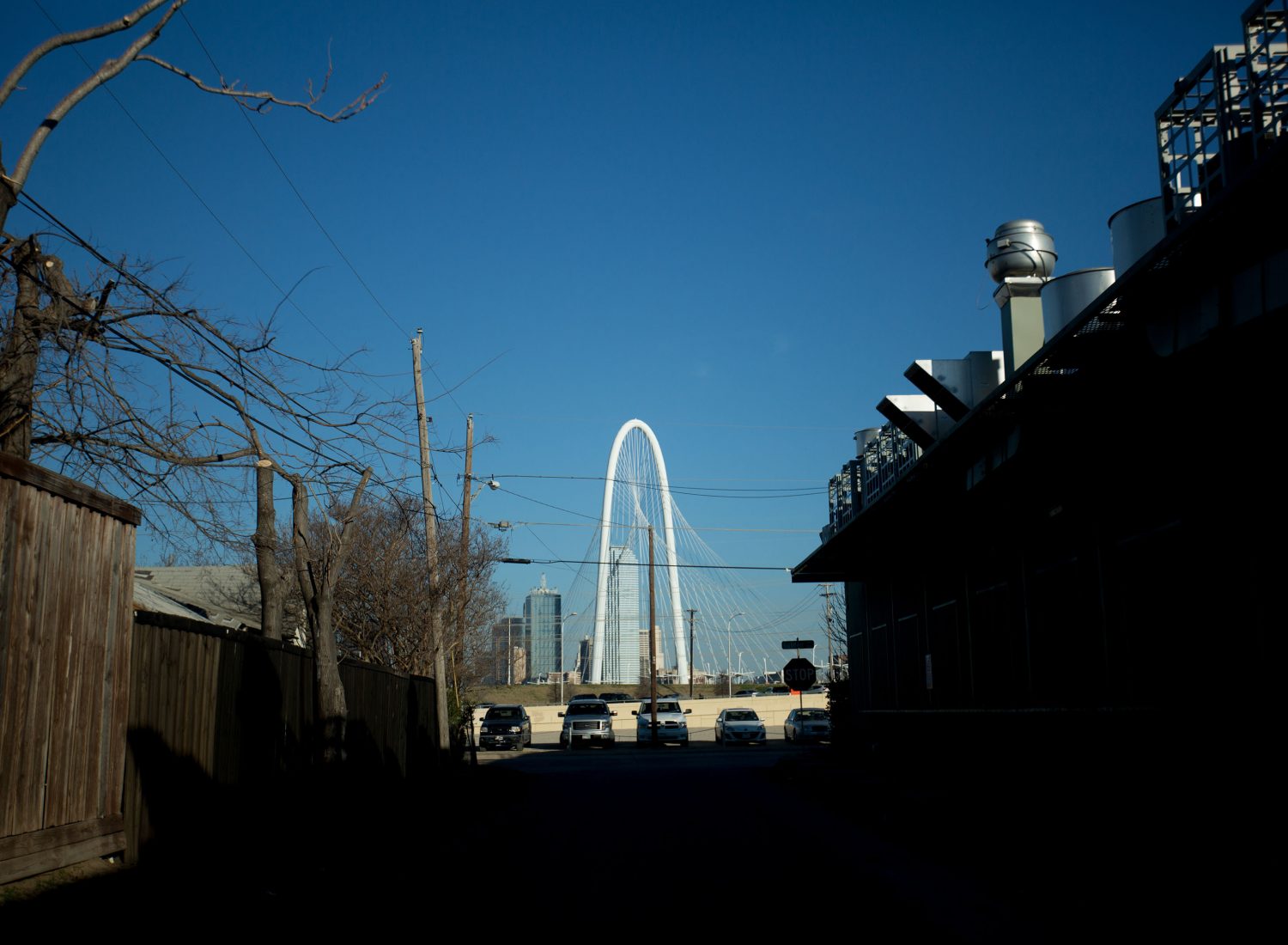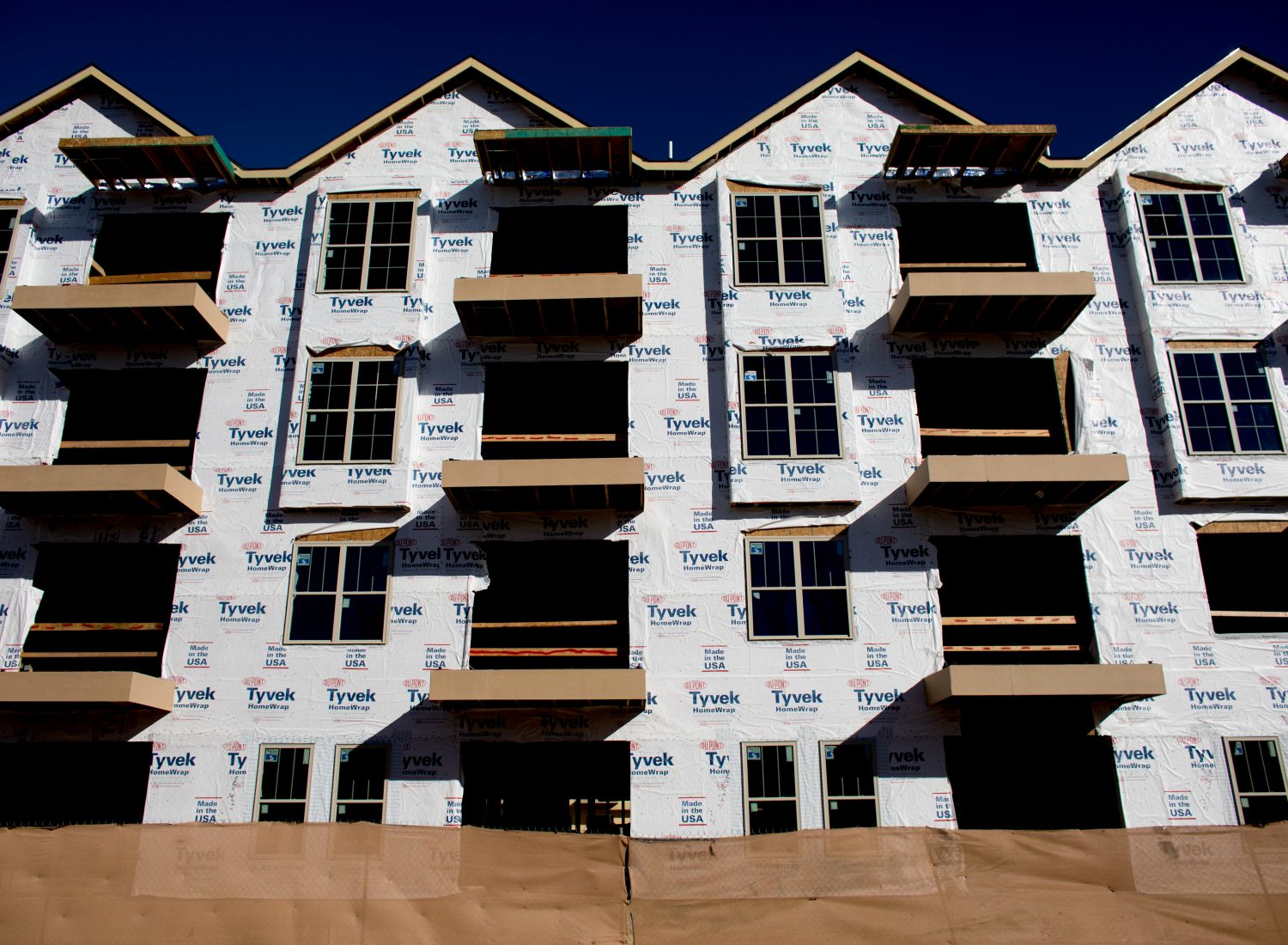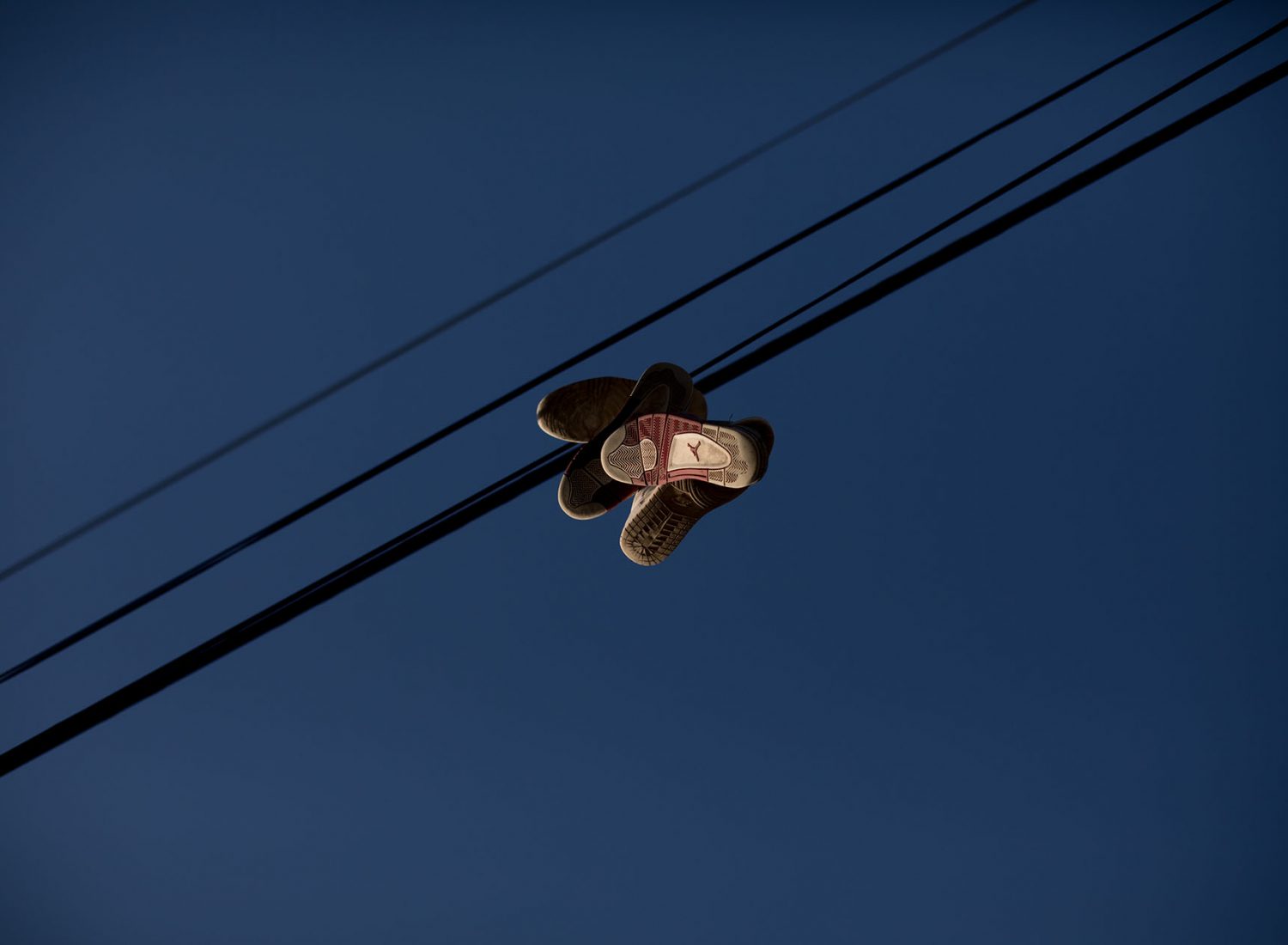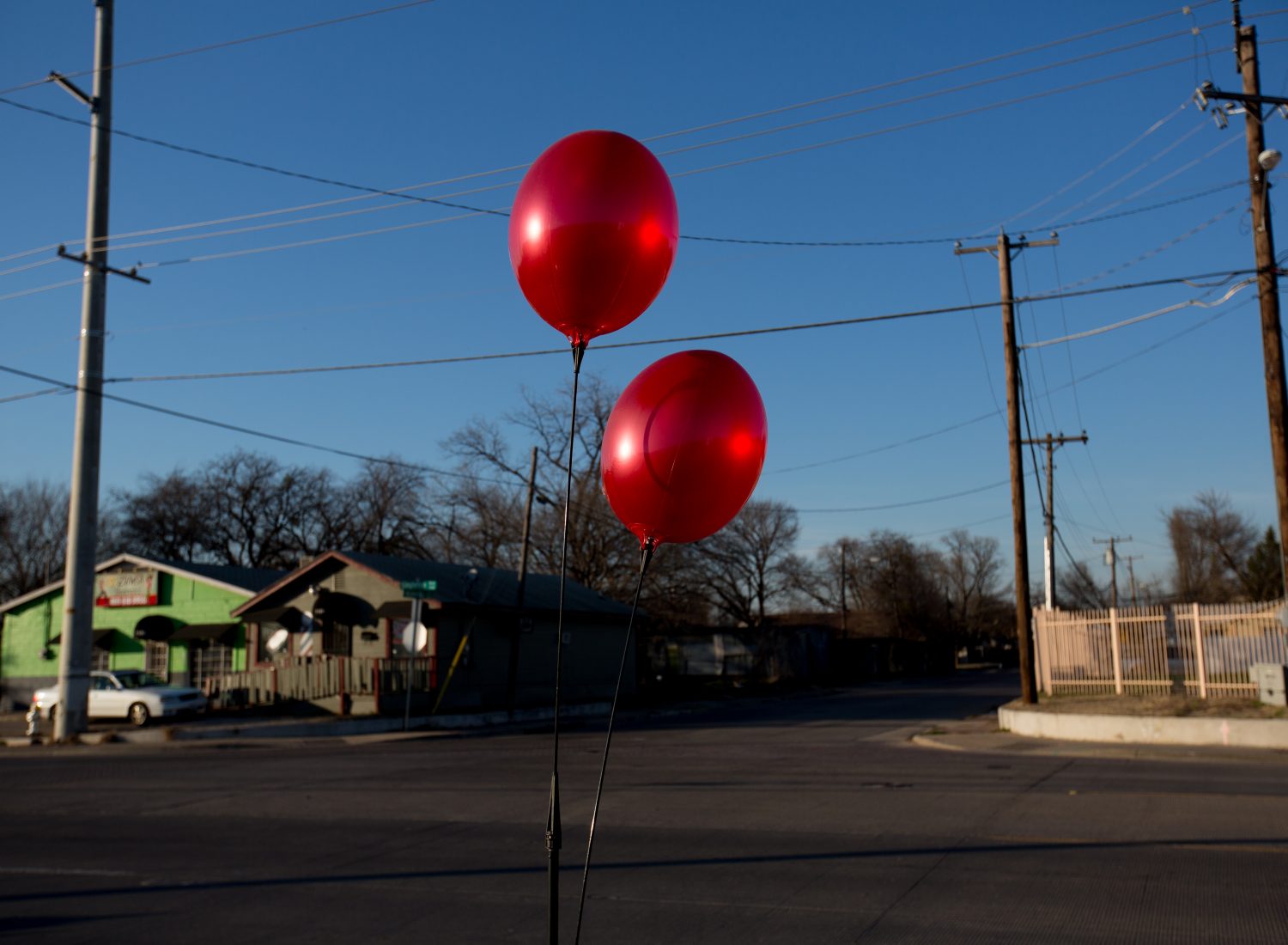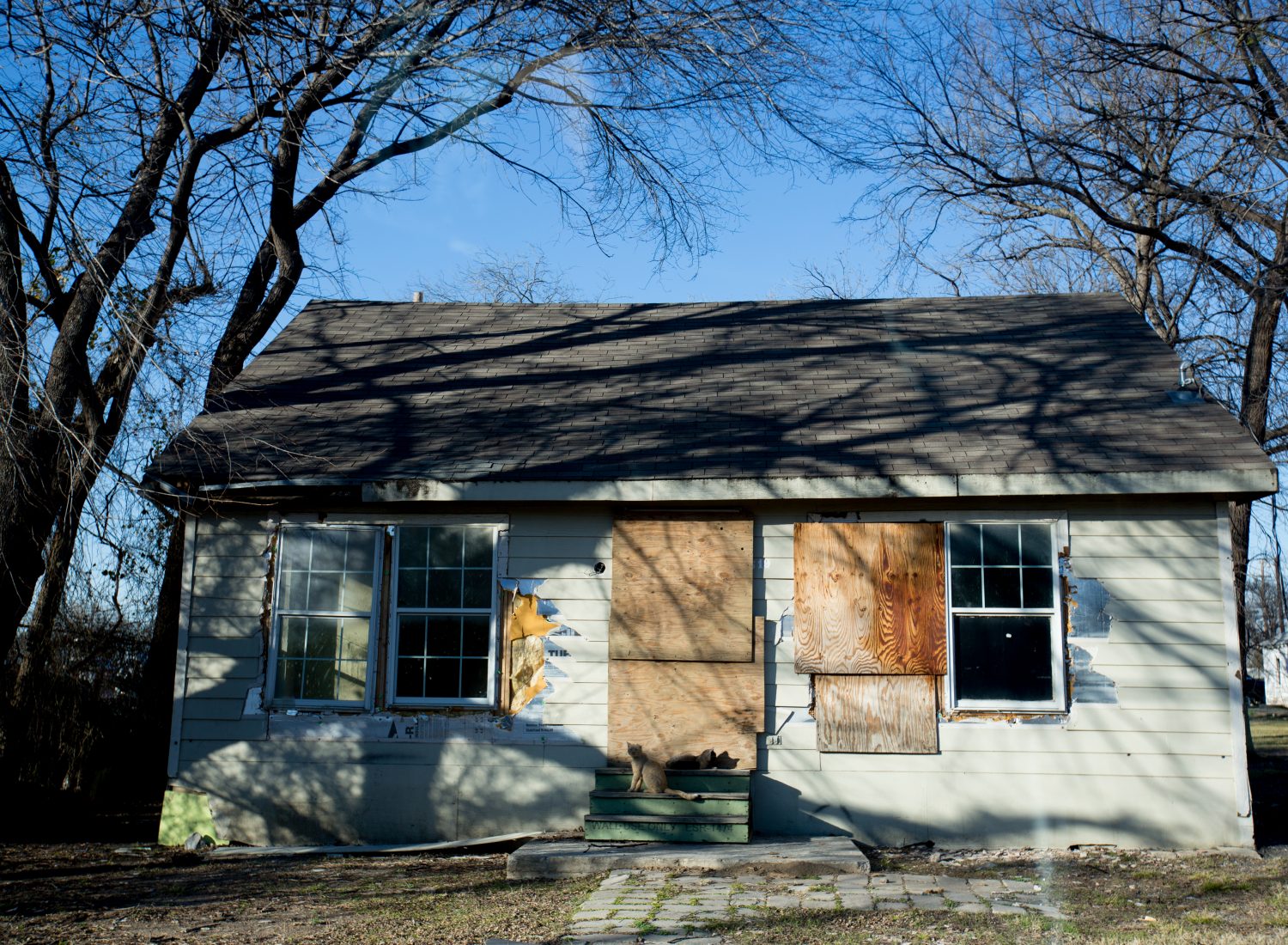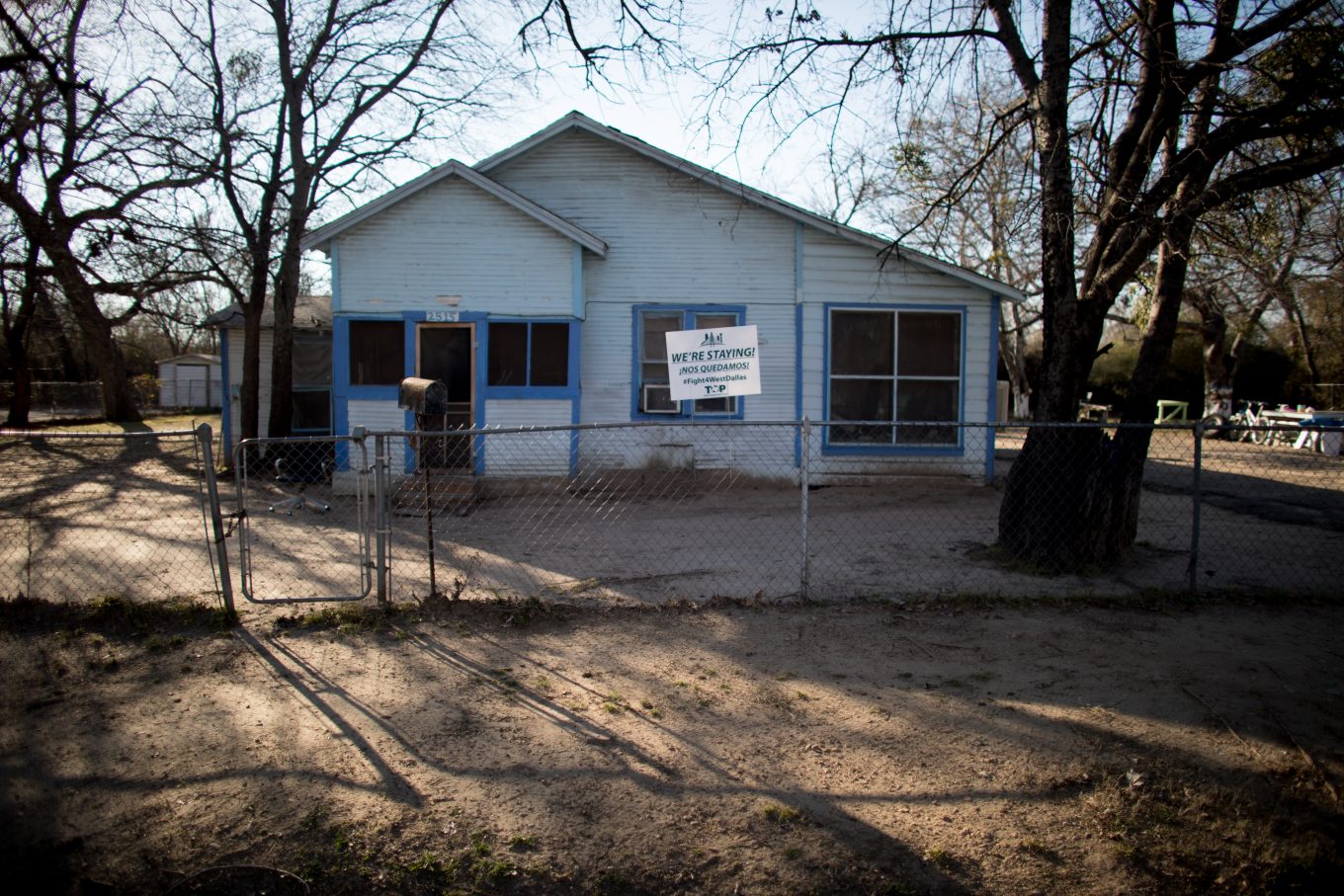 A West Dallas neighbor displays a "We're Staying" sign on their fence. Photo/Allison V. Smith
A West Dallas neighbor displays a "We're Staying" sign on their fence. Photo/Allison V. Smith
The Story Of West Dallas From Bonnie And Clyde To Margaret Hunt Hill
A century ago, West Dallas was a poor, mostly white, unincorporated home for folks on the edge of society. As industry came, black families moved in — then Latinos, who put down roots that still run deep today. The one thread that connects all those people? Poverty. And that’s just now starting to change. Glitzy apartments and tougher housing standards are forcing out hundreds of families who’ve called West Dallas home for generations — many with no place to go.
• The latest: Landlord offers to sell rental homes to longtime residents; judge extends move-out deadline.
Driving from downtown to West Dallas got a whole lot grander five years ago. A majestic white arch reaching 400 feet high makes the Margaret Hunt Hill Bridge a landmark that defines a city. The bridge, designed by Santiago Calatrava, is sleek and fast; you zip across the Trinity River with the Dallas skyline in your rearview, and dead ahead: a restaurant mecca.
Spiced lamb skewers, duck fat fried rice, a shop that sells nothing but cake. Trinity Groves’ open air patios are mobbed every weekend. Venture a little deeper into the neighborhood, past the valet stands and happy hour crowd, and the scene shifts. In front of small, weathered homes — folks watch the world from their front porches. You can hear the birds, maybe an ice cream truck.
“You don’t have to be rich you know, a home can be whatever you make it,” says longtime West Dallas resident, Ronnie Mestas. “For the most part this is a pretty quiet neighborhood really. Sit out in the front, or cook in the back, I just love it.”
Mestas says it’s the same West Dallas that’s been here for generations, before a bridge made it easy for the rest of North Texas to find. To understand this part of the neighborhood, you have to go back in time — all the way to the Great Depression.
Map: A Look At West Dallas
Click on the red markers below to identify West Dallas landmarks. The gray map overlay shows West Dallas in 1930. The map image was provided by Foscue Map Library at Southern Methodist University in Dallas.
A Culture Of Crime
In the ’20s and ’30s, West Dallas was unincorporated, says Doug Swanson, a professor and novelist.
“Most of the streets were unpaved. It did not have sewers. It did not have, in many places, running water.”
Swanson, a former reporter for The Dallas Morning News, wrote the definitive book on Benny Binion, the Dallas racketeer who started the World Series of Poker. When Binion needed a bad guy? He’d recruit in West Dallas.
“They were coming in from the countryside and they didn’t have a place to go. So that’s where they ended up. And it was a very fertile ground for criminal activity because of that.”
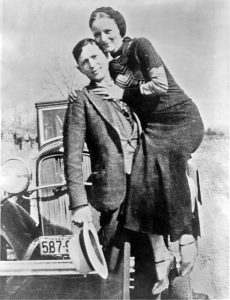
Bonnie and Clyde committed a series of murders and robberies before being killed in a police ambush in May 1934.
You may have heard of at least one particular pair of those criminals: Bonnie Parker and Clyde Barrow.
Swanson says because law-breaking paid well and real jobs were hard to come by, some folks turned to crime in desperation. Bonnie and Clyde and the gang may have been the most notorious West Dallas outlaws. But they weren’t the only ones.
“That’s the way it happened with a lot of people. There was too much money in crime, and not enough money in more legitimate pursuits.”
‘The Devil’s Backdoor’
During World War II, the North Texas economy perked up. People found work, often with defense contractors, and, Swanson says, the swirling crime scene calmed down.
“I think it was the economy elsewhere that helped pull people out of West Dallas, unfortunately West Dallas still got left behind,” Swanson says.
This was after all, the part of town known as “The Devil’s Backdoor.”
The city finally annexed West Dallas in 1954. Then came a massive housing project, known for brutal living conditions and nicknamed “the monument to poverty.”
The biggest monument there might have been a massive plant that recycled old car batteries. It was an economic magnet, drawing Latino workers and their families, and it was an environmental nightmare. Lead leached into the air, water and soil, poisoning children for decades.
Gallery: West Dallas parks
View aerial and satellite photos of a few outdoor spaces where West Dallas residents have gathered, fished and played for decades.
Poverty persists, but with promise
After the plant closed, nonprofits and community leaders tried to bring real change to West Dallas. Regina Nippert helped re-design affordable housing.
“My piece was really helping the local community to give voice to what it wanted. And that, back at that time, was a pretty new idea. That people that lived in public housing would actually give voice to their own needs, rather than someone coming in and saying here, this is for you, take it or leave it.”
She spent a lot of time in West Dallas in the ’80s, and today she runs the Budd Center at SMU. It helps nonprofits collaborate with schools in poor neighborhoods. She says West Dallas had, and still has, a rare and vibrant spirit.
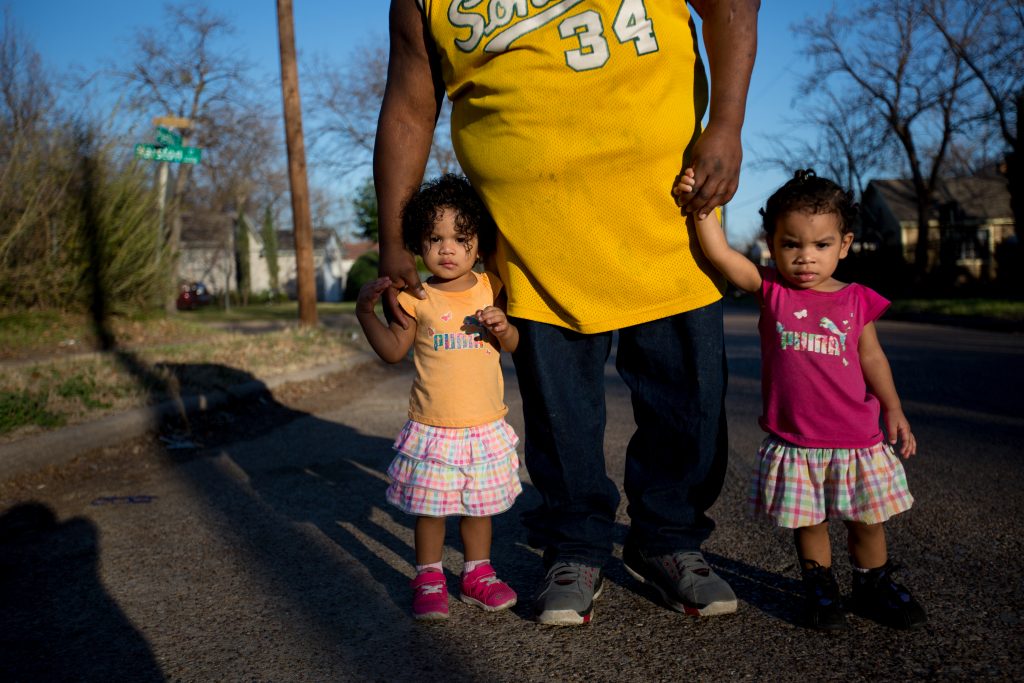
Tony Mims and his twin daughters in their neighborhood in West Dallas. Photo/Allison V. Smith
“There’s not this sense of hopelessness that you sometimes see in other neighborhoods where you’ve got generational poverty,” she says. “You’ve got a lot of people who came here with the intention of making a better life, and so there’s still that kind of idea of things are going to get better.”
In the ’80s, ’90s and 2000s, community leaders worked hard to improve schools and nonprofit programs. Still, poverty persisted.
“It was a, in some ways, a rough place to be. And in other ways it felt really full of promise. Because as an architect and a person aware of real estate, there was all this empty land.”
“I call it the wall.”
New Bridge, New Changes
Those soaring white cables of Calatrava’s bridge came with a price tag just south of $200 million. Critics ripped it as a “Bridge to Nowhere,” which didn’t sit well with the 15,000 people who lived on the other side.
“It’s hurtful to hear people say that you live nowhere, or that you work nowhere or that you go to school or you teach nowhere,” Nippert says.
The bridge was a straight shot that linked downtown Dallas to the community that had always been in its shadow. Doug Swanson, who spent so much time there three decades ago, says the lightning fast building boom caught just about everybody off guard.
“I mean you could obviously see the change coming, and then the apartments started going up, and I thought, ‘well I’m really an old-timer now’ because I never would have thought that you would see any development like that in West Dallas. And I also thought, ‘what’s going to happen to the people who have been living here?’”
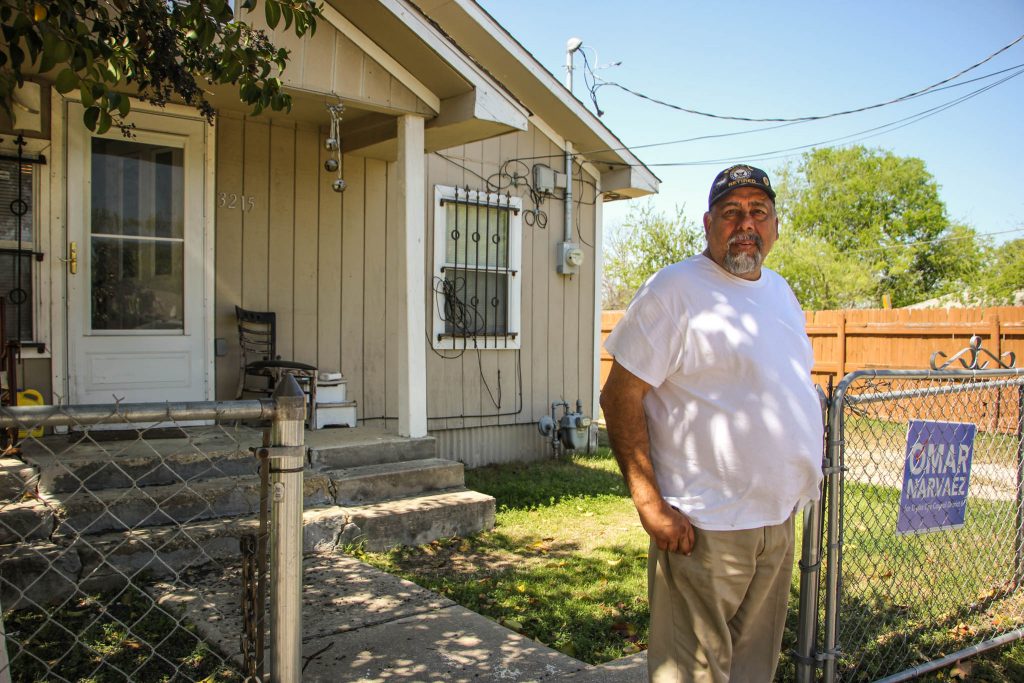
Ronnie Mestas is a longtime resident of West Dallas. Photo/Jessica Diaz-Hurtado
Ronnie Mestas is asking that question, too. The neighborhood leader says it’s impossible to ignore the changing face of West Dallas.
“I call it the wall. It’s the financial wall, those new apartments that are right there, you know?” Mestas says, “because it just looks like it blocks out the whole neighborhood.”
You can see that divide on Singleton Boulevard, just west of Sylvan Avenue. On one side, an empty lot where multi-story apartments and townhomes are taking shape; on the other, a rundown commercial strip, and behind that, hundreds of houses that date to the 1940s.
“People been here their lifetime, and it’s hard for them to move out, you know?,” Joe Garcia says.
That’s right. Garcia and 300 other families living in houses no longer up to city code are staring down a June 3 move-out deadline.
The Latest In ‘No Place To Go’
The owner of hundreds of aging West Dallas rental homes that had been slated for closure said Monday, May 22 that he will sell upwards of 75 of them to tenants. Hours later, a Dallas County district judge extended a move-out deadline for remaining renters until October. Learn more in the timeline below.


